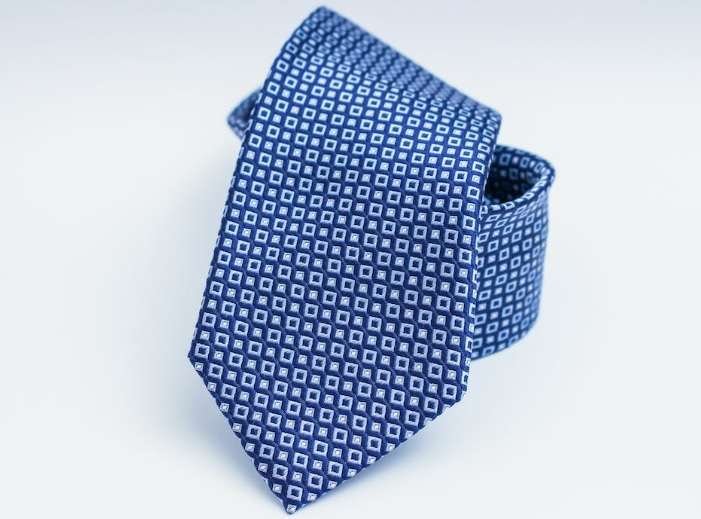
Every man, and woman shopping for men, needs to know how to shop for a tie. As with most clothes and accessories, they’re not all created equal. Since your tie is often what people notice first about your formal or semi-formal attire, you want it to make a great first impression. Luckily, there are some easy ways to tell which tie is best for you.
Think About Why You’re Wearing It
That cute tie with ducks on it might be a hit for less formal occasions, but it’s probably not the best option during an interview for your dream job. The color and style of the tie varies greatly based on why you’re wearing it.

Generally, stick to the following rules:
- Simple patterns and more muted colors are best for professional situations (interviews, office, format events).
- Black tie – Always wear a tux with a bow tie.
- If wearing a tie in a business casual setting, see what others are wearing first. Bolder colors, busier patterns, and fun prints are often acceptable.
- Consider your personality. If you’re a leader, trying to get noticed, or interviewing for a leadership position, a bold solid color, such as red, can be a great choice.
Consider Proportion
If you take away nothing else from this post, always consider proportion when tie shopping. When learning how to shop for a tie, this can also be the hardest thing to master. But, once you do, it’s much easier to quickly pick out a great tie for every occasion.
Start by looking at the width of the lapels on the jacket you plan to wear. Ideally, you want your tie to match that width. The trifecta is finding the perfect balance between your shirt collar, jacket lapels, and tie width. Also, make sure your collar completely covers the tie. If it doesn’t, your tie is too wide.

For the average guy, a three-inch width works well. It’s considered a nice medium width that works well with most suits and blazer jackets.
If you’re a slimmer guy, you may look better in a slimmer tie, around 2-2.5 inches wide. The same goes for your lapels. Slimmer fit your frame better. Naturally, the opposite is true for larger guys. If you have a wider frame, opt for a slightly wider tie, around 3.5-4 inches, along with wider lapels.
If you’re not sure, try on various size combinations in a store mirror to see what looks best. You can also go to a professional tailor and they’ll show you the exact combination that works best for your body.
Pick the Right Fabric
Let’s make this one simple – silk. It’s your best friend when it comes to ties. Silk drapes well, holds its shape, wrinkles less than other fabrics, doesn’t attract dirt and hair easily, and is easier to tie.

However, cotton and cashmere are also popular. Cotton works well in almost any environment, though it may attract hair and dirt easier. Cashmere is a nice, soft option that’s not as shiny as silk. It’s perfect for less formal or if you want a more matte look.
Thicker knit ties are also gaining in popularity. These are always casual or business casual and work best when tucked into a casual vest.
Ensure It’s Cut on the Bias

For a tie to lay flat and better maintain its shape, it should always be cut on the bias. In layman’s terms, it’s cut at a 45-degree angle against the grain of the fabric. Learning how to shop for a tie based on this isn’t easy online, unless the cut is specifically listed. However, in a store, if the tie doesn’t lay flat and tries to turn to one side, it’s not cut correctly.
Understand the Parts of a Tie
A high-quality tie will last you for years. Sadly, cheap, poorly constructed ties often look like quality ties at first glance. But, you can quickly tell the difference by understanding the parts of a well-made necktie:

- Envelope – This is the shell of your tie. It should be cut on the bias and made of silk, cotton, linen, or wool. This shell should consist of the blade (larger end), tail (smaller end), and gusset (neck piece).
- Folds – A fold refers to how many times a single piece of fabric is folded to create the tie. The most common is a three-fold, but six and seven-fold are popular as well. The more folds, the heavier the tie, making it lay better. However, seven-fold ties tend to not have a lining, causing them to wrinkle easier.
- Interlining – This is the fabric hidden within the envelope. The highest quality ties use wool to help make ties more wrinkle-resistant. Wool also helps a tie hold its shape better.
- Tipping – This is the fabric on the backside of the tie. While some ties use a completely different fabric than the envelope, you should avoid these. Look for self-tipped ties where the fabric of the envelope and the tipping are the same high quality.
- Loop or keeper – This is the band on the backside of the tie to hold the tail (or back blade) of the tie in place. A self-loop is best because it’s made of the same material as the rest of the tie. Try to avoid ties where the brand uses the brand label as the loop. These tend to wear out quickly.
- Slip stitching – Quality ties use slip stitching on the fabric’s underside to make the tie more flexible without it wearing out prematurely.
- Bar tack – This is a single stick on the backside of the wide part of the tie. It’s a horizontal stitch that keeps both sides of your tie in place and makes it drape better.
Pick the Right Length

A tie should always reach around your belt buckle. If it’s too short, it just looks tacky. If it’s overly long, it’s difficult to keep in place and will more than likely tug as it hangs on your belt buckle.
Ideally, keep it right at the top of your pants and you’re all set.
Frequently Asked Questions
Are busy patterns ever okay?
If you’re in a more casual setting, busy or even cute or silly patterns are perfectly fine. They show off your personality and let you have some fun. In professional settings, keep the pattern simple.
How can I save money on ties?
High-quality ties are expensive. Consider shopping at more affordable brands or check out thrift shops. Of course, even high-end retailers and brands run sales throughout the year. Take advantage and buy multiple ties while they’re cheaper.
Image credit: Unsplash









